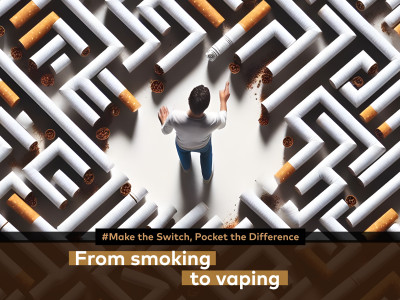A SMOPHED study is to conduct an investigation on vapers and smokers accessing emergency hospital department to inform how we can change public health policy strategies. This is the first study conducted by the CoEHAR institute that will evaluate the cost-benefit ratio of using combustion-free products and their impact on healthcare policies.
How much do smokers burden the national healthcare system? How much would be saved if all smokers switched to low-risk products? These are the questions COEHAR researchers at the University of Catania say they posed for their “important study aimed at analysing the correlation between the health data of patients arriving at hospital emergency department and their smoking habits.”
“As we know,” the authors write, “more than 40 million smokers worldwide have decided to switch to reduced-risk products to reduce the harm caused by the combustion of conventional cigarettes. But how much would tobacco harm reduction strategies and the reduction of smoking-related diseases affect international health policy strategies? Would there be fewer hospital admissions without conventional cigarette smoke? The answer will be provided by questionnaires administered to over 3000 hospitalized patients whose smoking habits and potential use of combustion-free products will be analysed to assess the causes of hospital admission and the subsequent outcomes of the diseases identified. According to numerous studies, the use of combustion-free products results in significantly lower exposure to toxic components and therefore health benefits, but data on the epidemiological im-pact of these products on the population are still being evaluated.”
The SMOPHED study takes its name from “Tobacco SMOking and nicotine PHenotype and severity of clinical presentation at Emergency Room Department”.
The work aims to analyse the association between the severity of clinical presentation observed during emergency department visits among patients using various nicotine products and the subsequent outcomes. Specifically, data from the first hospitalisation and the potential mortality rate related to different consumption patterns are evaluated.
According to data collected upon admission to the emergency room, the number of smoker patients with more severe clinical outcomes, and therefore with a higher hospitalisation or mortality rate, is higher than non-smoker patients.
Professor Davide Campagna, the Department of Clinical and Experimental Medicine at the University of Catania, said: “We intend to assess whether, and if so how, the use of electronic cigarettes and heated to-bacco products can influence both emergency department admissions and health, through an analysis of real data from patients presenting to emergency departments, often the first and only point of contact for smokers with the healthcare system.”
Based on statistical data from admissions to the Emergency Department of the Gaspare–Rodolico Polyclinic Hospital in Catania, it is estimated that approximately 1500 smoker patients, 1000 former smokers, and at least 350 dual users will be recruited.
Participants will be selected shortly after triage admission, during the evaluation phase by hospital staff necessary for assigning urgency levels. At this stage, the patient will complete a questionnaire declaring whether they smoke, vape, or use both instruments.
Professor Riccardo Polosa, founder of the CoEHAR, added: “We will not only evaluate exposure to different types of nicotine-containing products, but we will also use the data collected for assigning the NEWS score - the one used for admission to the emergency room, which highlights the severity of the illness. Our hypothesis is that the use of combustion-free electronic devices is associated with a much lower NEWS score, and therefore with less severe illnesses resulting in shorter emergency room stays, fewer negative outcomes, and consequently savings in terms of costs borne by the national healthcare system.”
The NEWS or National Early Warning Score details a patient’s conditions, clinical evolution, and severity of the illness.
Polosa explained, the data from SMOPHED can be used to contribute to the implementation of health policies that take into account harm reduction strategies and that can reduce the number of emergency facility admissions, waiting times, and all related costs incurred by the national healthcare system.
Dave Cross
Journalist at POTVDave is a freelance writer; with articles on music, motorbikes, football, pop-science, vaping and tobacco harm reduction in Sounds, Melody Maker, UBG, AWoL, Bike, When Saturday Comes, Vape News Magazine, and syndicated across the Johnston Press group. He was published in an anthology of “Greatest Football Writing”, but still believes this was a mistake. Dave contributes sketches to comedy shows and used to co-host a radio sketch show. He’s worked with numerous vape companies to develop content for their websites.








